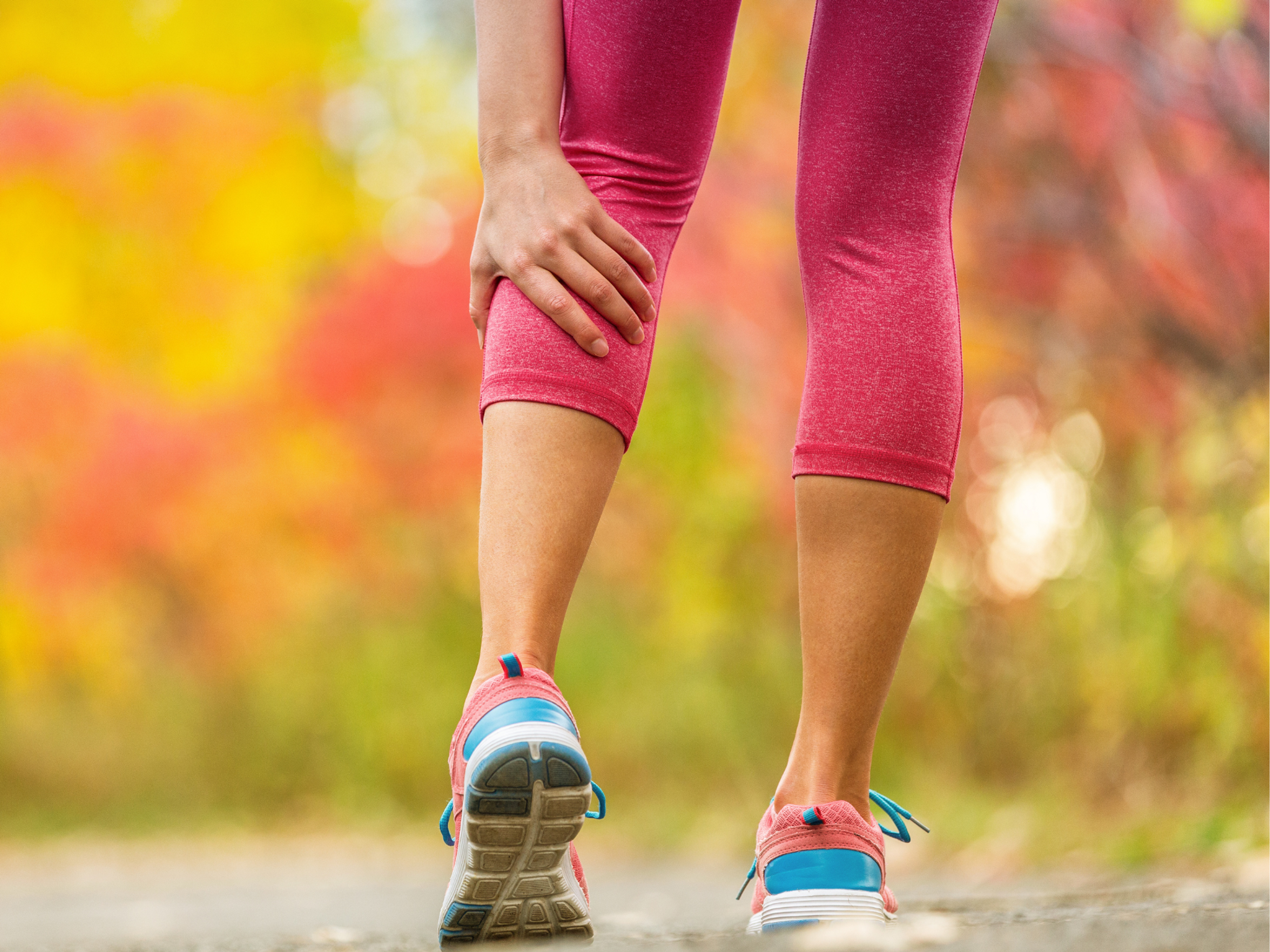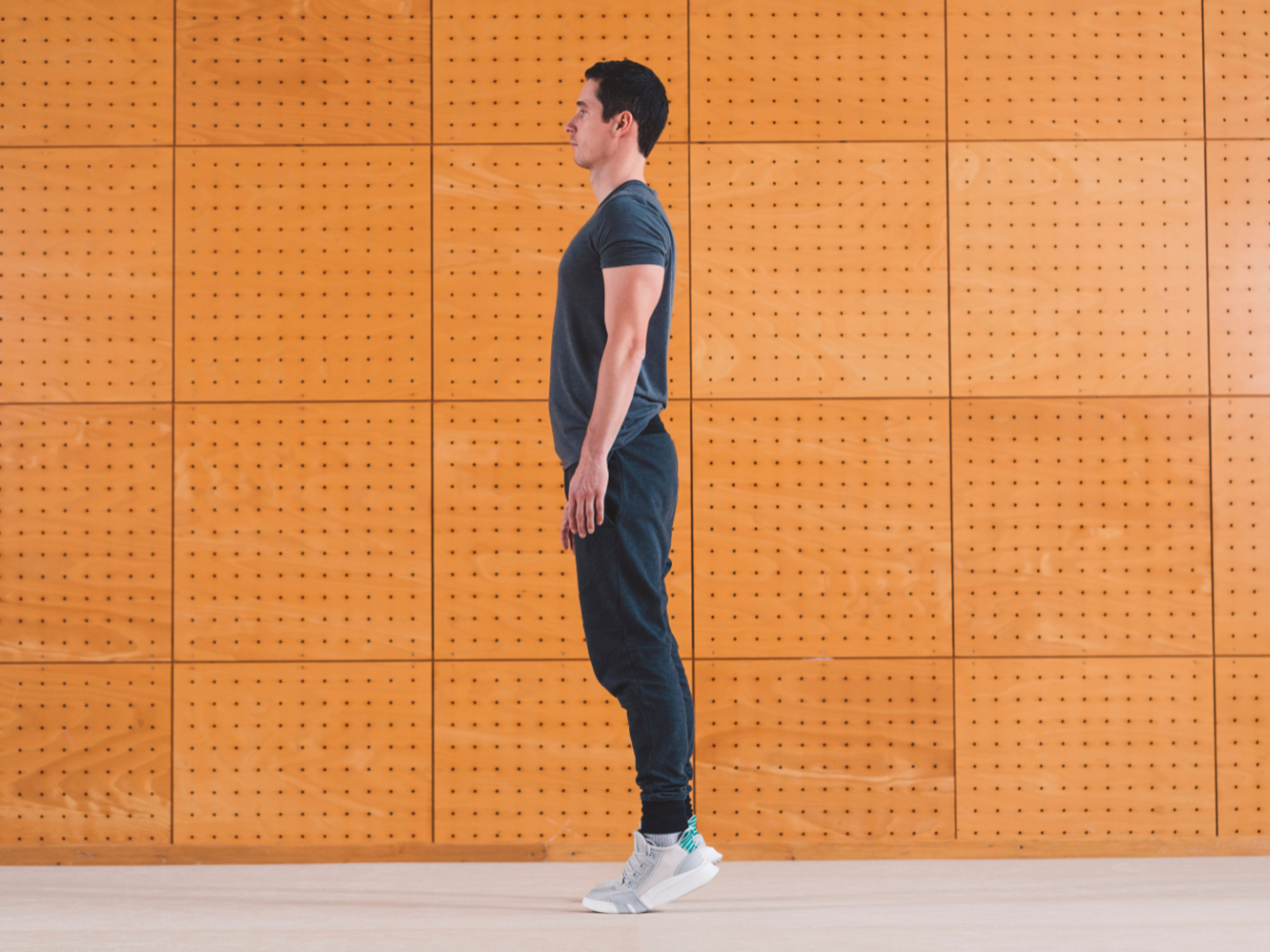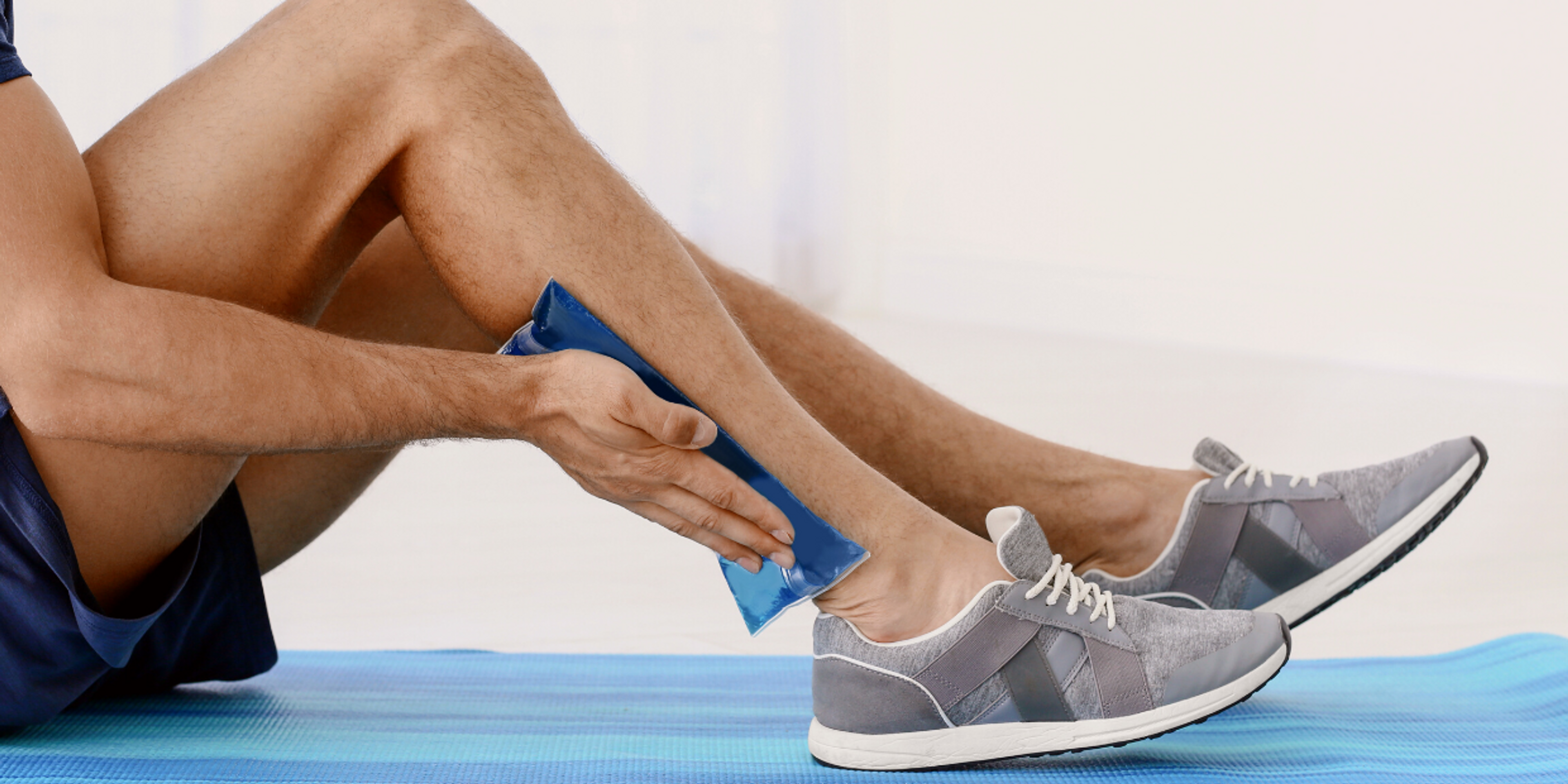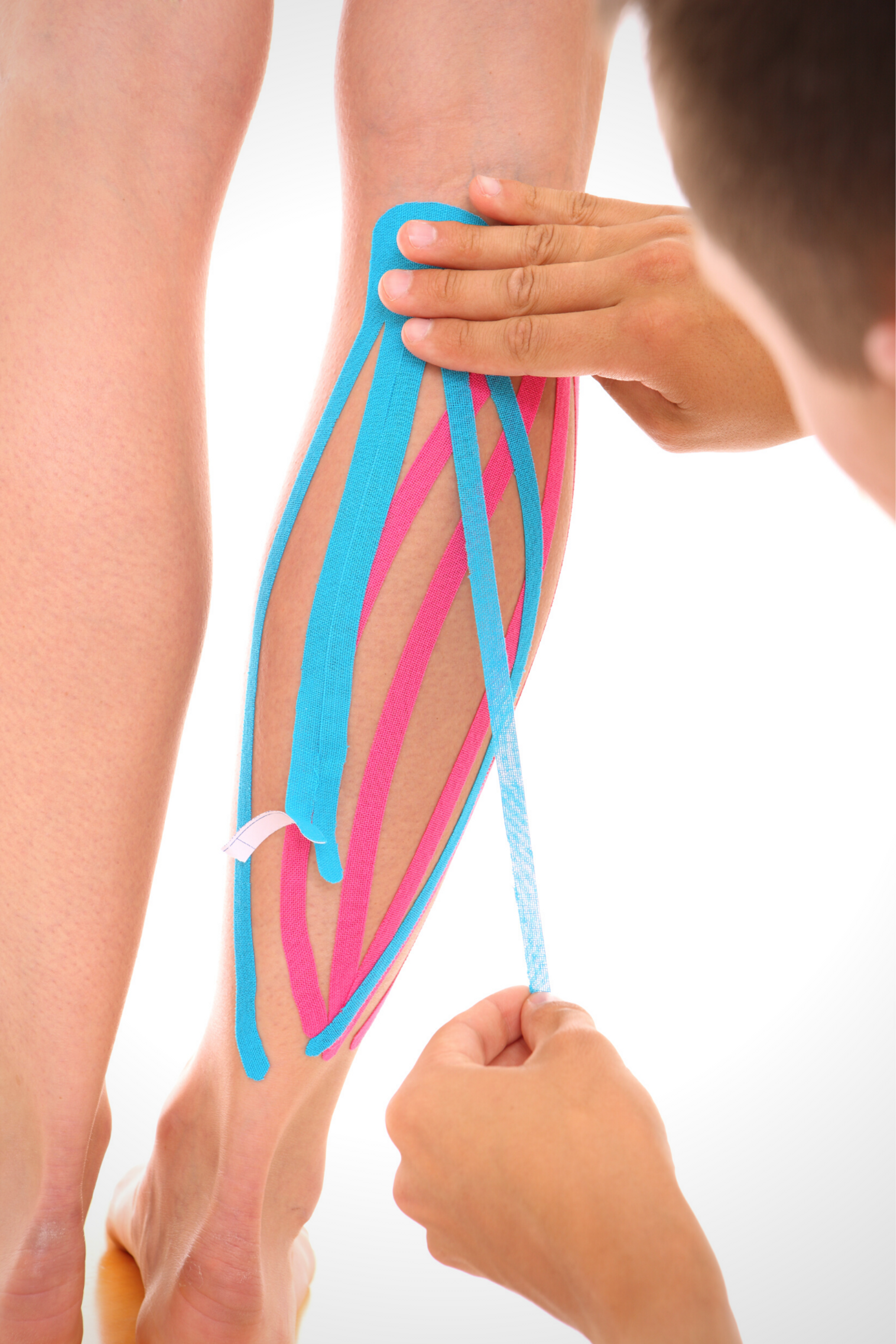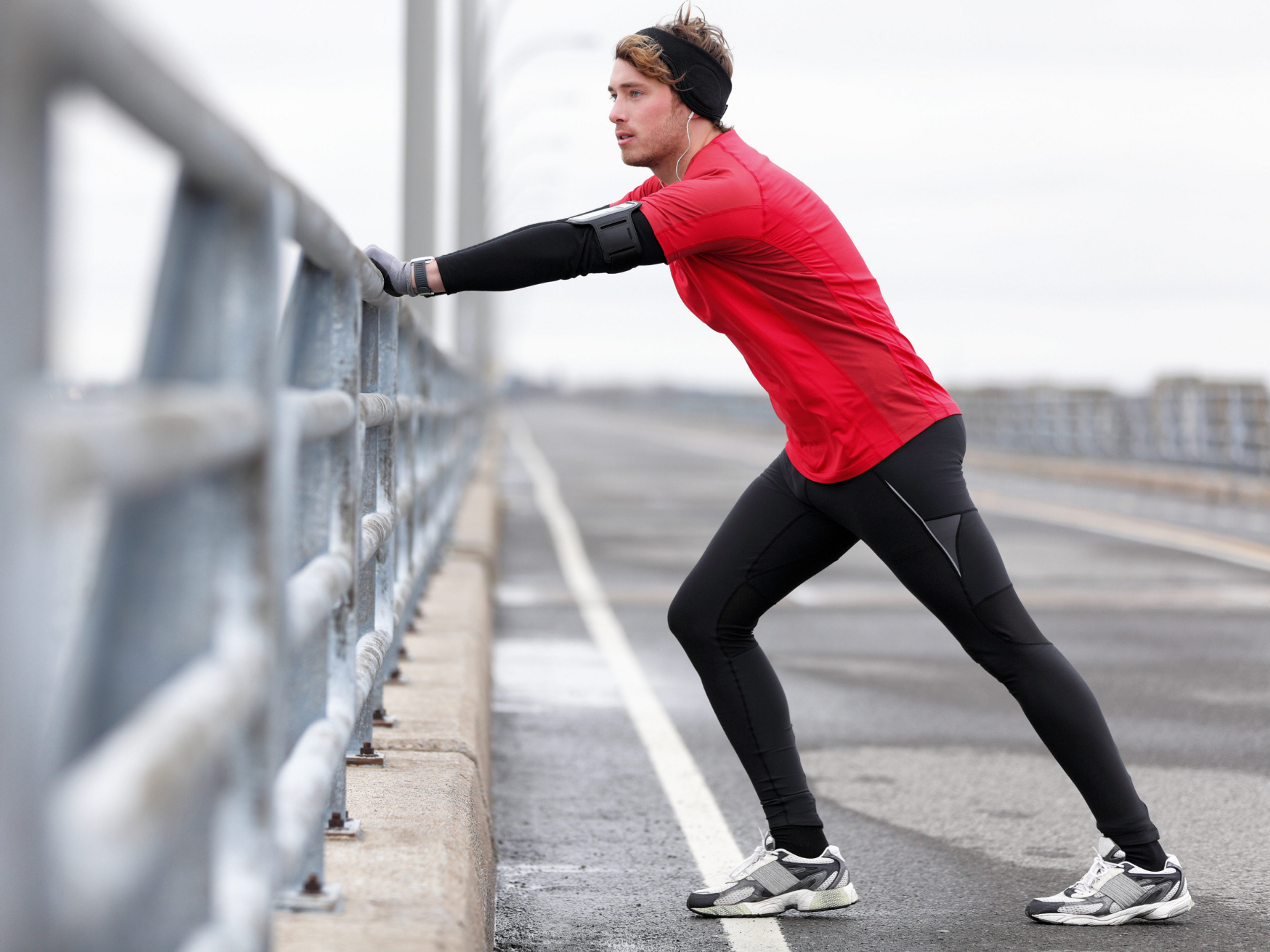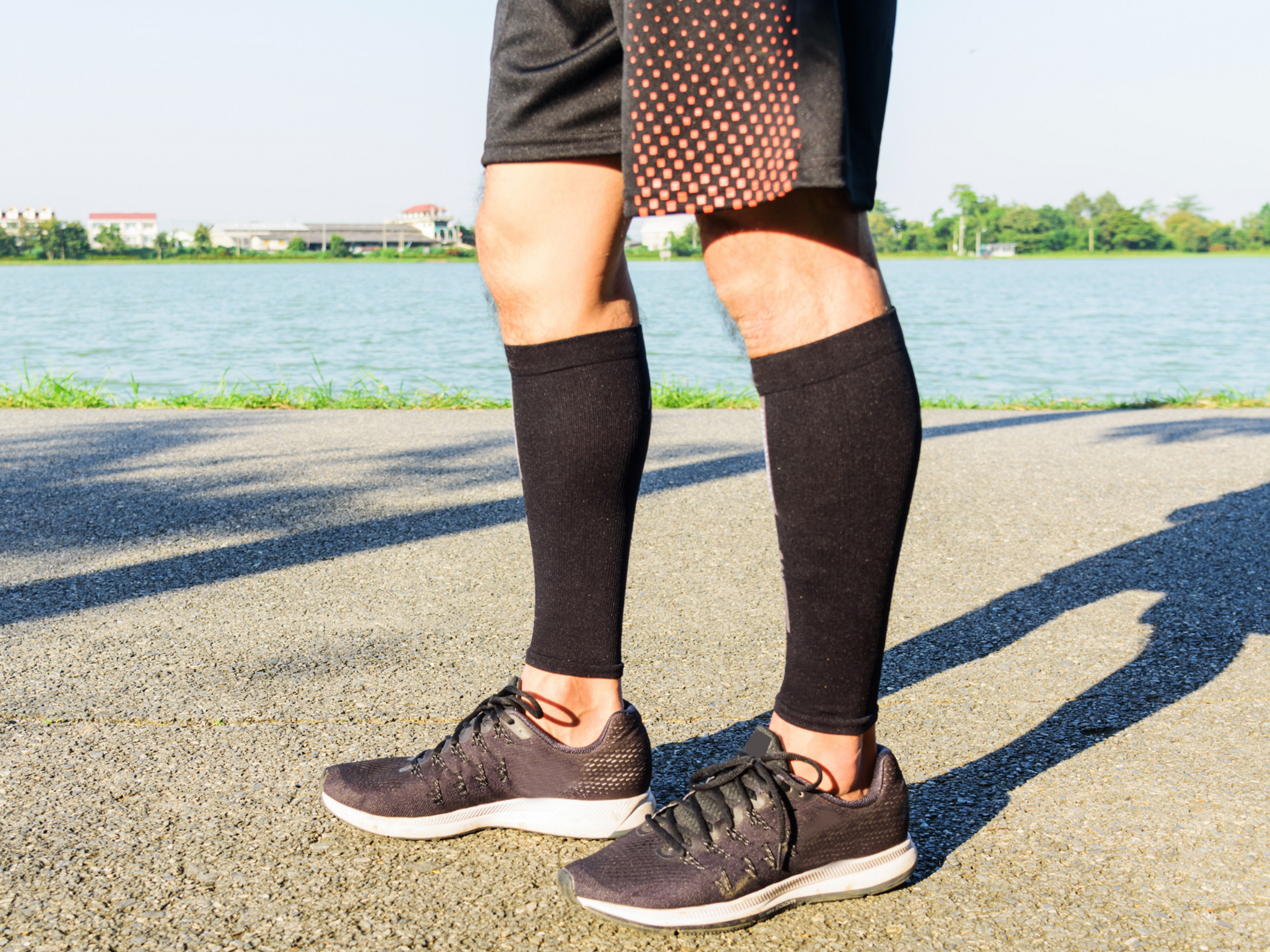Calf strains - Causes, symptoms, treatment and healing times
What is a calf strain?
A calf strain is when some of the muscles at the back of your lower leg tear. This usually happens during activities like running, jumping, changing directions, or in some cases, miss-stepping on uneven surfaces.
Which muscles get injured in calf strain?
Your calves consist of deep and superficial muscles. In calf strain, the focus is on the superficial muscles. These include:
- The Gastrocnemius muscle – its main function is to bend your knee and point your foot down.
- Soleus muscle – its main function is to stabilize your lower leg and point your foot down.
The Gastrocnemius gets injured more often than the Soleus because it crosses over more joints and takes on more of the load during movement.
The Gastrocnemius and Soleus muscles taper down to the base of your calf and join to form a single structure, the Achilles tendon, which inserts into your heel bone.
This muscle-tendon complex acts as a pulley system – pulling your heel up, pointing your foot down, and moving your body forward.
What happens inside the muscle when it’s strained?
Skeletal muscles (the ones that move you) are made up of muscle cells, bunched together to form muscle fibers.
When you strain your calf muscle, it means the muscle fibers are stretched or torn, either partially or completely.
In a partial tear, some fibers stay intact and the muscle can still function to some degree. In complete tears, the muscles can’t contract properly because the fibers are no longer joined.
Calf strain symptoms - what it feels like
Many people report feeling a sudden sharp pain in the calf, like something hitting them on the back of their leg, and not being able to continue with activity straight after the injury.
Common signs and symptoms of calf strain are:
- A tight, tender, or weak calf muscle
- Spasms or cramping sensations in the calf muscle
- A snapping or popping sound when the injury occurred
- A sudden sharp pain in the back of the lower leg that gets worse with movement
- Pain in your calf when you’re at rest
- Bruising in the calf muscles
- Swelling in the calf
When should you see a doctor for your calf strain?
You should get your injury assessed by a medical professional if:
- You heard a pop or felt a heavy blow to the back of the heel
- Your injury is close to the Achilles tendon
- You have pins and needles or tingling in your leg after your injury
- You have severe pain, swelling or bruising
- Your symptoms keep getting worse
- Your symptoms keep you awake at night or disturb your sleep
- Your injury isn’t getting better in the expected healing timeframes
- Your leg is swollen, red, hot to touch or throbbing
See a doctor immediately
How do we grade calf muscle strains?
There are a few different grading systems that you can use, but for most people, the simplest (described below) works best.
Calf strains are graded as mild (grade 1), moderate (grade 2), or severe (grade 3) according to the number of muscle fibers involved, the severity of your symptoms, and how the injury affects your function.
By understanding these grades, you can make better treatment or training choices.
Calf strain grades
- 1st degree, mild
- Fewer than 10% of the muscle fibers are torn
- Mild pain, spasm, localised tenderness, swelling
- Minimal loss of function
- Able to continue activity
- 3rd degree, severe
- From 50 to 100% of the muscle fibers are torn
- Immediate severe pain, palpable defect or mass
- Complete loss of muscle function
- Disability
- 2nd degree, moderate
- From 10 to 20% of the muscle fibers are torn
- Moderate pain, spasm, tenderness, bruising, swelling
- Clear loss of function
- Unable to continue activity
What’s the difference between a pulled calf, calf strain or torn calf?
Clinically, there’s no clear link between a pulled calf, calf strain or a torn calf and the grades of muscle injury.
Many people describe a minor calf injury as a ‘pulled calf’ or ‘calf strain’, and a more severe injury, as a ‘torn calf’. We like to avoid confusion and name injuries according to their grades (1, 2 or 3).
What causes calf strains?
Common causes of calf strains include:
- Overtraining - Pushing your calf muscles beyond their current capacity
- Fatigue - Your muscles struggle to contract in a coordinated pattern when tired, making them vulnerable to strains
- Sudden increases in walking, running, or jumping intensities and volume - Your calf muscles won't be able to adapt and strengthen quickly enough to the new workloads
- Weak calf, lower back, and core muscles
- Previous calf strain - If you go back to activity without fully restoring your calf muscles' strength and endurance, they get injured more easily
- Insufficient warm-ups
- Increased age - Our calf muscles lose strength and flexibility as we age, making them vulnerable to injury.
The good news is that you can avoid these causes (even the ones related to old age) by following a sensible training and injury prevention plan. Have a look at our Injury Prevention Plan for runners in the Exakt Health app if you want to see an example of this.
Calf muscle strain healing times
Calf strains take between 4 weeks and 6 months to heal. The typical healing times for the different grades of calf strain are:
- Grade 1: 4 – 6 weeks
- Grade 2: 8 – 12 weeks
- Grade 3: 4+ months
Remember...
What is the best way to treat calf strain?
The best research-backed treatment for calf strains is a careful balance of relative rest and progressive rehab exercises. However, other treatments can provide temporary pain relief.
Treatments commonly used for calf strains include:
- Relative rest - allows your injury to settle and heal (more on this below)
- Progressive exercise plan - restores the strength and flexibility in your calf muscles and prevent strains from recurring (more below)
- Icing your calf - can reduce pain and swelling
- Massage - helps with mental wellness and reduces pain, but should not be started too early
- Medications (avoid NSAIDs) - can help manage pain
- Kinesiology Taping - can reduce pain, bruising and swelling
- Compression sleeves - can benefit calf strain recovery in many ways as long as they're not too tight
- Foam rolling - can reduce muscle stiffness but should only be started in the final stages of healing
- Electrotherapy - may help with reducing pain
How relative rest works
For your calf strain to heal, you must temporarily reduce the load you place through your injured muscles. Still, you usually don't have to rest completely.
Relative rest means you reduce the volume or intensity of your activities to a level that does not aggravate your injury. How much you must reduce it depends on your calf strain's severity.
For example, if you still feel discomfort when you walk around the house, it's better not to try and go for longer walks outside. Or if walking inside the house is fine and it only hurts when you try to walk fast, you can likely start doing slightly longer walks outside at a slow speed.
Ways in which you can adapt your walking to make it easier on your strained calf muscles include:
- Using crutches - may be needed for severe strains
- Wearing shoes with a heel (like running shoes) or placing heel-lifting inserts into your shoes - reduces the strain on the calf muscles
- Walking more slowly
- Walking shorter distances
- Avoiding stairs, hills, and steep inclines
Activities to avoid
Progressive exercise program
Following a carefully graded exercise program is the other key component of any successful calf strain rehab plan. Only through strength training can your calf muscles rebuild the strength they had before they got injured.
Because injured muscles aren't very strong, the program must start with easy, low-load exercises that match your strain's current stage of healing. However, to regain full strength and avoid calf strains recurring, the exercises must progress in intensity and complexity as your strain heals.
The calf strain rehab plan in the Exakt Health app aligns your rehab exercises with the phase of healing your calf strain is in. It uses your feedback about pain and effort after each workout to progress your exercises safely and effectively through each stage.
What now?
Now that you have a good understanding of what a calf strain is and what the best treatment is, we suggest that you dive into how a progressive exercise-based rehabilitation plan works.
